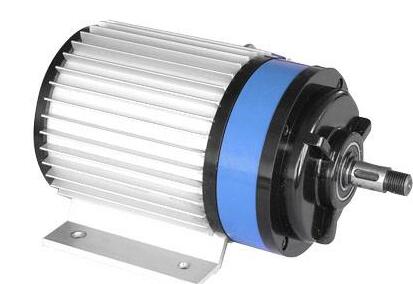
We have previously introduced the maintenance requirements of explosion-proof permanent magnet motors in detail. It can be seen that this motor cannot be disassembled at will; when disassembling and inspecting, the explosion-proof surface of the part cannot be used as the fulcrum of the crowbar, and it is not allowed to knock or hit the explosion-proof surface. And after the work of this motor is completed, it must be cleaned. What I want to introduce today is the thermal protection of explosion-proof permanent magnet motors. I hope you can operate according to it after reading it!
Overview of thermal protection for explosion-proof permanent magnet motors:
Thermal protection components commonly used in small and medium-sized three-phase asynchronous motors can be roughly divided into three categories: PTC thermistors, PT100 temperature sensors and bimetallic temperature relays. There is also a moisture-proof heating belt, which is mainly used for internal heating of explosion-proof permanent magnet motors in humid environments. These temperature protection components are buried in corresponding positions inside the explosion-proof permanent magnet motor, such as the motor windings or the front and rear bearing covers of the motor. When the motor windings or When the temperature of the bearing is too high, this signal is transmitted to the temperature control instrument of the explosion-proof permanent magnet motor, which can cut off the power supply of the motor and protect the motor.
Thermistor:
The thermistor is a positive temperature coefficient semiconductor resistor. When it exceeds the specified temperature (Curie temperature), its resistance value increases stepwise as the temperature increases, up to 10-1000 times. When using it, it is equipped with an electronic circuit to detect and then activate the relay. Thermistor has small size, small heat capacity and fast response speed. When manufacturing an explosion-proof permanent magnet motor, the thermistor is embedded inside the winding of the motor. For a three-phase motor, select three thermistors connected in series, embed them in the U, V, and W three-phase windings of the motor in sequence. After binding, they are dipped in paint together with the windings, and the s are connected to the junction box.
Temperature Sensor:
Platinum thermal resistance sensor, its resistance value is 100 ohms at 0 degrees. The temperature sensor is an analog signal that measures the temperature of the corresponding parts of the explosion-proof permanent magnet motor through the corresponding relationship between its resistance value and temperature. By converting its resistance signal through a dedicated integrated circuit, higher-precision measurement can be achieved. When measuring the winding temperature, embed it in the winding at the end of the winding and tie it up, dip it in paint and dry it together with the winding, and then the to the junction box.
Bimetallic temperature relay:
The bimetallic temperature relay can be directly embedded in the winding of the motor. When the motor is overloaded and its winding temperature rises close to the limit value, the bimetallic sheet with a pair of contacts is heated and bent, causing the contacts to open and cut off the circuit, thereby achieving temperature protection for the explosion-proof permanent magnet motor.
Moisture-proof heating tape:
In a humid environment, when the motor stops working, the moisture-proof heating tape starts to work to heat the motor windings, thereby avoiding condensation on the motor windings due to moisture and ensuring that the motor can still operate normally in a humid environment. The heating tape s are led out together with the motor s. When the motor is powered on, the heating belt is powered off; when the motor is powered off, the heating belt is powered on and heated.



















